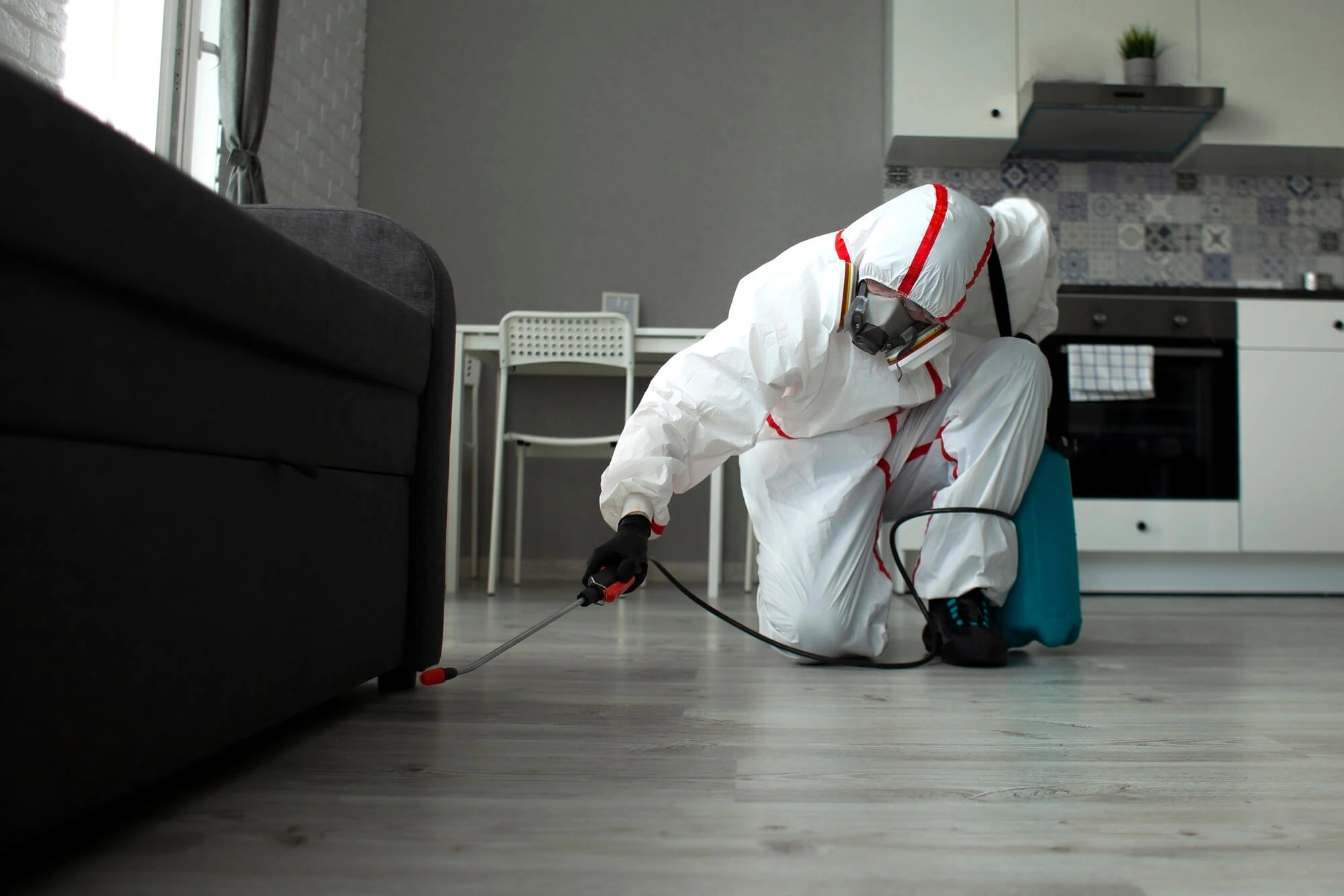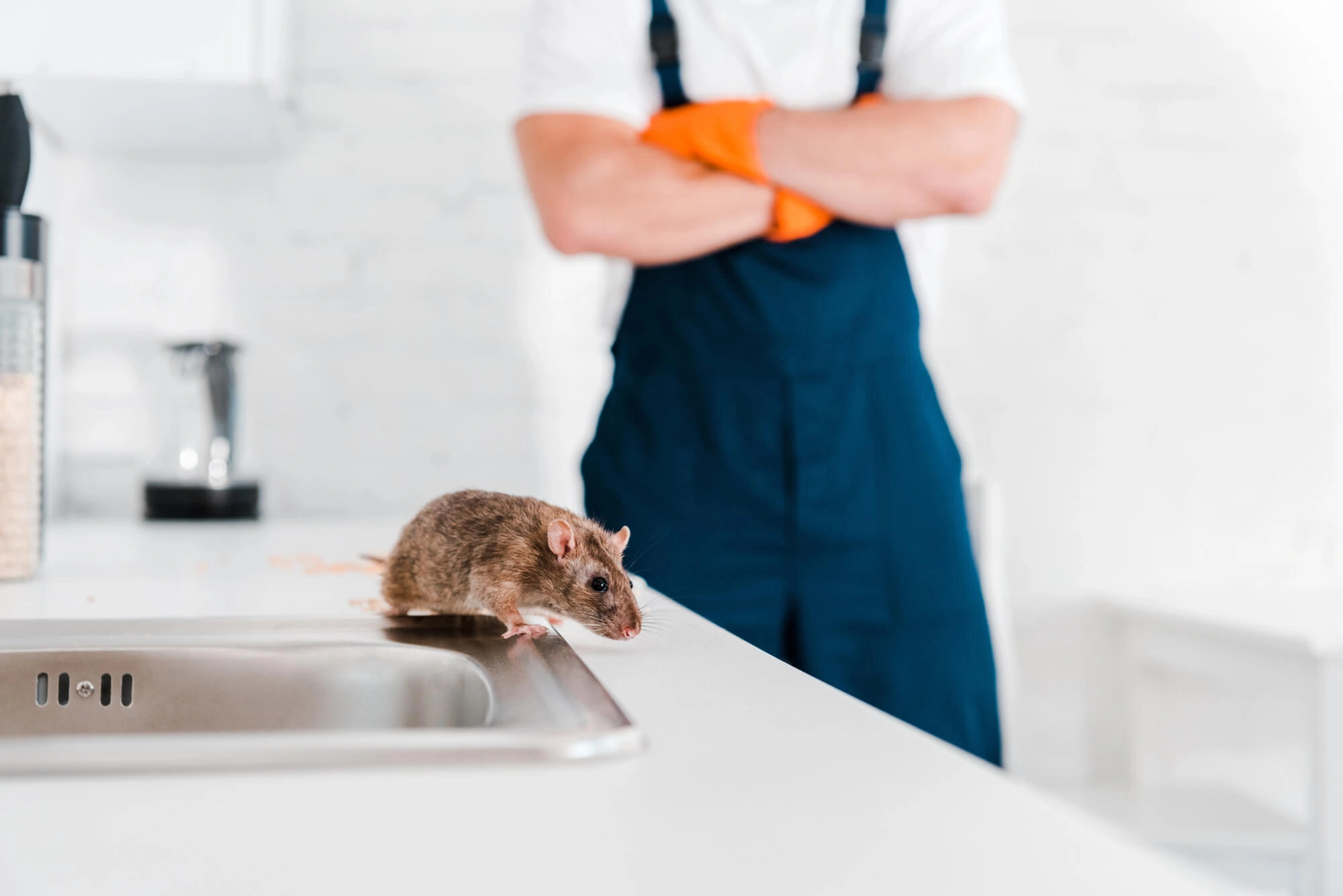Florida winters are short and mild, but the season still triggers a shift in local pest behavior. The first crisp evening in November might feel refreshing to us, but for roof rats, it's a sign to move indoors.
Homeowners may assume that colder climates are more prone to rodent problems, but in truth, pest control in Jupiter becomes especially important during the winter months. Roof rats remain active year-round in South Florida, and the seasonal drop in temperature pushes them to seek warmth, food, and shelter inside homes.

Why Roof Rats Move Indoors in the Florida Winter
Florida’s First Cold Snap Signals Rats to Relocate
In South Florida, a small drop in nighttime temperatures drives roof rats to seek warmth in attics, garages, and wall voids. Even in the high 50s, these rodents remain active throughout winter, foraging, nesting, and breeding indoors.
Decreasing Daylight Encourages Nocturnal Activity
In South Florida, shorter winter days affect rodent behavior. Longer nights provide roof rats more time to forage undetected, as dim lighting and quiet streets facilitate their movement. With homeowners often indoors or traveling, it's easier for rats to find entry points into homes.
Winter Habits of Humans Invite Pests In
Holiday decorations, fruit on counters, and stacked firewood create opportunities for roof rats to enter homes. Many homeowners, especially snowbirds, leave during the holidays, giving rodents easy access to explore and settle in.
What Makes Your Home a Target for Roof Rats
The Architecture of High-End Homes Works Against You
Luxury properties often feature high eaves, tile roofs, and multi-level rooflines, which enhance curb appeal but also provide access points for rats. Loose flashing, cracked tiles, and unprotected attic vents serve as invitations for pests. Even newer homes are at risk, as gaps in construction and weather-related material expansion can create openings for determined rats.
Landscape Bridges Make Entry Easy
Dense vegetation, fruit trees, and decorative vines may be attractive, but they act as natural ladders for roof rats, which are agile climbers. They can easily access your home via overhanging branches or ivy-covered walls, searching for weak spots and openings into attics.
Untrimmed hedges and decorative lighting also provide cover for rats to approach your home without being seen, particularly during early morning or late evening hours.
Comfortable Interiors Offer Ideal Nesting Grounds
Roof rats seek comfort rather than chaos, finding ideal nesting spots in soft insulation, warm ducts, and cluttered areas like garages. Easily accessible food, such as pet food, fruit on counters, and items stored in garages, can attract them.
In larger homes, they often remain unnoticed for weeks, taking refuge in quiet guest rooms, rarely used attics, and spacious garages where they can nest and reproduce undisturbed.
Warning Signs That Rats Are Already Inside
1. Unusual Sounds in the Attic or Walls
Roof rats are nocturnal. Their activity becomes most noticeable late at night or early morning. Homeowners often hear scratching, chewing, or light scurrying noises in ceilings or along upper-level walls. These sounds often go unnoticed in homes with high ceilings or large attics until the infestation is well-established.
2. Droppings and Grease Marks in Hidden Areas
Roof rat droppings are small, dark, and slightly pointed at the ends. They may appear along baseboards, near pantry areas, or in corners of storage rooms. Grease trails or smudges along walls or roof beams result from the oils in their fur rubbing against surfaces they repeatedly travel.
3. Gnaw Marks and Nesting Debris
Insulation pulled from HVAC ducts, shredded paper, or torn fabric often indicates nesting activity. Rats gnaw through wires, plastic bins, and even drywall to build hidden nests. In luxury homes, this can mean damage to smart systems, entertainment wiring, or security camera lines.
Why Waiting Makes Things Worse
1. Rapid Breeding in Warm Florida Winters
South Florida’s climate allows rats to reproduce year-round. A single pair of roof rats can produce dozens of offspring in a single season. Mild winter temperatures only accelerate nesting and colony growth. What starts as a few scratching sounds quickly becomes a full-blown infestation.
2. Property Damage and Safety Risks Add Up Quickly
Rats chew through insulation, PVC, electrical wires, and wood. Their activity not only reduces energy efficiency but also introduces fire hazards and structural damage. Luxury materials—hardwood, custom cabinetry, smart lighting—can suffer permanent damage if a rat colony settles in.
3. Health Risks Rise as the Nest Grows
Roof rats can carry bacteria, viruses, and parasites. Their urine and droppings contaminate the air and surfaces, posing respiratory and allergy risks, especially in enclosed attic spaces. Dead rodents left in walls also attract secondary pests like flies and beetles.
How to Stop Roof Rats This Season
Inspect Your Home Thoroughly—Inside and Out
Winter is the ideal time to inspect rooflines, vents, soffits, and other vulnerable areas. Look for any opening larger than ¼ inch—roof rats only need a tiny gap to get in. Check utility access points, outdoor kitchens, pool houses, and attic vents for signs of tampering or wear.
Seal Every Entry Point with Professional-Grade Materials
Patch holes using rodent-proof materials, such as steel wool, hardware cloth, or caulk rated for outdoor use. Reinforce attic vents, install chimney caps, and replace worn-out garage door seals. Traps and repellents provide temporary relief, but without sealing access points, rats will inevitably return.
Trim Back Landscaping That Touches the Home
Roof rats use trees, trellises, and shrubs to reach upper levels. Trim palm branches, cut back overgrown hedges, and ensure no vegetation touches the home’s exterior. Remove outdoor décor that provides cover, and avoid stacking firewood or boxes near the house.
Store Food and Waste Securely
Place pet food and birdseed in airtight containers. Keep fruit off the counter or use sealed produce drawers. Lock garbage bins and avoid feeding outdoor pets during nighttime hours. Never leave compost exposed or bins unsealed.

Protect Your Home This Winter with Trusted Pest Control in Jupiter!
Florida’s cooler months may be brief, but roof rats don’t need long to take over. They’re fast, quiet, and resourceful—and once they settle in, they’re hard to remove. Winter is the best time to act before the damage begins.
Family Shield Pest Control Services provides discreet, professional, and pet-safe rodent prevention across South Florida. Whether you're a full-time resident or a seasonal homeowner, our inspection and proofing services are tailored to meet the needs of luxury properties.
Contact us today to schedule your winter rodent inspection and keep your home protected.


